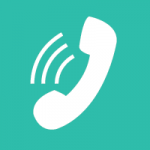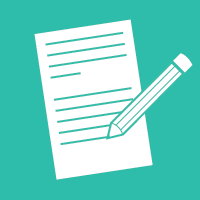
We the Resistance is a community working together to defend our rights, freedoms, and quality of life from the dangerous agenda advanced by the Trump administration and other leaders in our federal government. We’ve created this toolkit to help you make your voice heard by your representatives in Congress. Below, you’ll find step-by-step guides for high-impact advocacy tactics including calling and meeting with members of Congress, speaking up during town halls, and connecting with local media to spread your message on the issues that matter most to you. Thanks for being a part of the fight to make our country a better, fairer place for women and their families!
Calling Your Member of Congress
Meeting With Your Member of Congress in Person
Writing a Letter to the Editor
Attending a Congressperson’s Events or Town Halls
Calling In to a Local Radio Show

We the Resistance Guide to:
Calling Your Member of Congress
How long is it going to take? 3 to 5 minutes per call.
How difficult is it? So easy!
What’s the impact I’ll have? Very high impact!
Calling the office of your member of Congress or another decision maker might seem like a daunting task, but it’s quick, easy, and most importantly: it’s effective. You’ll likely speak with a busy staff member, but your call WILL be counted and reported to your member of Congress. Remember: your representatives work for you, and they want to hear from you!
Here’s a step-by-step guide on how to make your call:
- Be ready to give your name, zip code, and sometimes your full address (to verify that you’re a constituent), and a brief message about why you’re calling. If you’re calling about a specific bill, have the bill number available, too. If you have a personal connection to the issue, that can be powerful to add, so think about how you can relay your story in one or two short sentences before you get on the phone. You can even write it down so you don’t forget any important details.
- Moment of truth: dial (202) 224-3121 to be connected to the Capitol Switchboard, and follow the prompts to be connected to your member of Congress. If it’s after hours and the switchboard is closed, or if you’d prefer to call their offices directly, you can also find their numbers at www.house.gov or www.senate.gov.
- When the staffer picks up, tell them your name, where you live, and your position on the issue at hand. For example:“Hi, my name is Madeline, and I’m a constituent in Little River, ZIP code 95456. I’m calling to urge the Congressman to reject the Affordable Care Act repeal, which could threaten women’s health and economic security. I depend on the assistance the ACA provides to help afford my health insurance, and the replacement leaves me out. Please oppose this attack on the health care law!”
- Be polite — thank the staffer for listening (they’ve been doing this all day!), and if you’d like, request a written response.
Now what?
That’s it, for now! Told you it was quick and easy. But if you’re ready to roll up your sleeves and do a little more, check out our guides on setting up an in-person visit or writing a letter-to-the-editor.

We the Resistance Guide to:
Meeting With Your Member of Congress in Person
How long is it going to take? 5 to 10 hours total.
How difficult is it? Fairly easy, though it’ll take some time and persistence!
What’s the impact I’ll have? Extremely high impact!
You’ve taken action online, you’ve called your members of Congress, and now you’re wondering: what else can I do? One of the most effective ways constituents can have an impact on the legislative process is to actually show up in person at the local office of your member of Congress.
Here’s a step-by-step guide to an awesome in-person visit:
- Get your people together. Going to a Congressional office on your own can be intimidating — and there’s power in numbers! Show your member of Congress that this is an issue that’s deeply felt by bringing as many people as possible with you to either their D.C. or local district office. If that’s not possible, go on your own!
- You can call the member’s office or email the staff to request a meeting, and some offices even allow you to request a meeting on their website. Let them know how many people will be coming with you, and if the lawmaker is unavailable to meet with your group, ask for a meeting with the staffer in charge of the issue(s) you want to discuss. Don’t be discouraged if there isn’t an issue expert at your local office. Some offices are staffed by only two to three people, so you shouldn’t expect to get an expert for every appointment. The important thing here is to FOLLOW UP until you get on the calendar. Be respectful, but don’t let them forget about you.
- Think about what you’re going to say in the meeting, and practice a few times with your group. You can even assign speaking roles, but don’t get too caught up in trying to say the perfect thing. The people you’re meeting with know you’re not an expert, so you don’t have to pretend to be one. If you have a personal story to share, be ready to do so. Know what your Congressperson’s position is on your issue and be prepared to ASK something of him or her at the end of your meeting — to support or oppose a specific piece of legislation or to champion your cause.
- Print background materials. You can find reports and fact sheets at nwlc.org on a range of issues — find some materials that back you up, and print some out to leave behind after your meeting.
- Show up. Deep breath, you got this. Be on time, conduct your meeting, let things go with the flow, but get your ask in. Leave behind your materials and get the contact information for the folks you met with so you can follow-up. Thank your Congressperson and their staff, and hey, why not ask for a photo op? (They love that.)
- Follow Up! A few days after your meeting (or sooner if it’s urgent!), send a quick thank-you note by email or mail. If you have more materials to bolster your case, send them along with this message. And use this opportunity to reiterate your ask — thank them if they’ve committed to take action or ask them to reconsider if they haven’t. If you’re not getting an answer on your ask, don’t be afraid to be persistent. Get a timeline for when an answer will be available, and follow up again!
Now what?
That’s it, for now! But if you’re ready to roll up your sleeves and do a little more, check out our guides on writing a letter-to-the-editor or calling your Member of Congress.

We the Resistance Guide to:
Writing a Letter-to-the-Editor
How long is it going to take? About an hour.
How difficult is it? Medium-level difficulty; you’ll have to do some research and some writing.
What’s the impact I’ll have? Letters-to-the-Editor (LTEs) are great tools for creating awareness — and showing members of Congress that people are paying attention to an issue.
Most newspapers publish letters from readers who live in the region. A short letter can have a big impact, as most members of Congress pay attention to local news. Not to mention: LTEs are FREE media for the issue you care about.
Here’s a step-by-step guide on how to get your letter noticed:
- Always check the paper’s guidelines for LTEs! A surefire way to get your letter rejected is not paying attention to their submission guidelines. These are usually found on the editorial page and will give you guidance on word counts and how to submit. The easiest way to find the guidelines is to do an Internet search: “how to submit a letter to the editor to X newspaper.”
- Check out what’s already being published. Read a few existing LTEs to get a sense for what kind of stuff makes it in — that’ll help you craft your letter. You’ll also want to make sure that your letter is relevant to the newspaper, so see if you can write your letter as a response to an article or another opinion piece.
- Keep it simple! Short and to-the-point is what often gets published, so try to avoid long-winded arguments and keep your sentences succinct. Make your case in strong, clear language — and if you have a legislative ask (that your member of Congress support or oppose a piece of legislation, for instance) make it in your letter – they may see it! Use NWLC talking points!
- Name drop. The Senator or elected official you want to reach likely gets a round-up every morning of the news articles that he or she is mentioned in. By calling on your elected officials by name in your LTE, you can help make sure they are reading it and getting your message.
- You guessed it…make it personal. A compelling personal story is always good to include when trying to influence decision makers. If you have a personal stake in the issue, share it in the LTE, but remember to keep it short!
- Reread what you wrote — or get a proofer! Make sure you give your letter a close read after you’ve written it, or better yet, find a friend or family member to proof it for you. A fresh sets of eyes can help catch run-on sentences and grammatical errors that you might miss.*
- Share your contact info. Most newspapers will confirm that you still want your LTE published, so make sure you provide up-to-date contact information with your submission.
*See what we did there? Did you catch our error?
Now what?
That’s it, for now! But if you’re ready to roll up your sleeves and do a little more, check out our guides on calling your member of Congress or attending a Congressperson’s events.

We the Resistance Guide to:
Attending a Congressperson’s Events or Town Halls
How long is it going to take? Depending on the event, 1 to 3 hours.
How difficult is it? Pretty easy, but you should be prepared for some public speaking!
What’s the impact I’ll have? It could be huge, if you can press a member of Congress on an issue in a public forum and get him or her on the record.
Members of Congress all host town halls and other events that are free and open to the public. Posing a question to a Congressperson in this kind of forum can be a great way to apply pressure to do the right thing and bring attention to a cause you care about.
Here’s a step-by-step guide to getting to ask your member of Congress a question in front of everyone:
- Find out where they’ll be and when. Most members of Congress will post public events on their website or social media accounts, but if you’re having trouble finding out about their events, you can always call their office to ask directly.
- Get your people together. Showing up to an event to get all eyes on you and your issue can feel intimidating — and there’s power in numbers! Show your member of Congress that this is an issue that’s deeply felt by showing up with as many people who can join you. But if you can’t round up supporters, your voice will still count!
- Do your research. Know the issue you want to ask about, have some facts on hand in case you need to back yourself up, and have a specific question in mind that you want your member of Congress to answer on the record. Write that question down! Even if you don’t read it word for word, it’s good to remind yourself before you speak, so you feel more confident that you’re saying the right thing.
- Don’t hide in the back of the room! Remember, this is all about getting attention — so get ready for your close-up. You’re more likely to be acknowledged if you’re sitting right up front.
- Ask the question — and be ready to press them if they duck and dodge. Keep your language short and simple, but make clear your ask. If you can cite their own words on the issue, even better — make sure they know you’ve done your research! And if they try to dodge the question (which they very well might!) be ready to respectfully follow up and ask them to respond more directly to your question. If there’s no Q&A portion of the event, don’t be afraid to ask one-on-one in a meet-and-greet at the end of the event. Remember, your member of Congress works for you! You can also consider recording the conversation or town hall and sharing it on social media!
Now what?
That’s it, for now! But if you’re ready to roll up your sleeves and do a little more, check out our guides on writing a letter-to-the-editor or meeting with your member of Congress in person.

We the Resistance Guide to:
Calling In to a Local Radio Show
How long is it going to take? About an hour.
How difficult is it? Easy, but you’ll be on the radio so don’t let your nerves get the best of you!
What’s the impact I’ll have? Radio can help amplify your message to people you otherwise wouldn’t be able to reach!
Your member of Congress likely has his or her staff paying attention to various news outlets, including local radio – plus, you can raise awareness in the community about your issue!
Here’s a step-by-step guide to your first brush with radio fame:
- Get the lay of the land. Check out the radio station’s website or give them a call to find out about shows that accept call-ins. We strongly suggest listening to the program a few times to make sure that you’ll get a fair shot at stating your case — you don’t want to be caught on live radio with a shock jock who’s not going to let you make your point!
- Do your prep work. Know the issue you want to talk about, have some facts on hand in case you need to back yourself up, and take some notes. In the heat of the moment, you might get nervous (which is totally okay!) and having some simple bullet points to refer back to can help bolster your confidence. Make sure to have some water on hand, too!
- You’re on the air! . Once you make it onto a radio show, introduce yourself clearly and tell the host why you care about this issue. As always, make it personal if you can. Be yourself and make your case quickly, but with clear and strong language. And try to match the show’s tone. If they’re a newsy, serious show, don’t crack a ton of jokes. If it’s drive-time chat, relax a bit. If you’re a good “fit” with their format, they may give you extra time and give your issue extra attention
- Have a closing statement ready. You may be asked if there’s anything you want to add before going off the air, so think about what you might say to make your case in one or two quick sentences!
Now what?
That’s it, for now! But if you’re ready to roll up your sleeves and do a little more, check out our guides on writing a letter-to-the-editor or calling your member of Congress.
We the Resistance are committed to working together to halt the dangerous agenda advanced by the Trump administration and the leaders in Congress – to protect our rights and freedoms and to defend the most vulnerable among us.






